Repeat Photography: 1 Season Following Prescribed Fire
Re-introducing natural disturbances like fire have been a big part of Blue Valley Ranch’s plan to manage for diversity in its vegetation communities. Implementing a prescribed fire program presents several challenges but is worth the effort as it results in such a strong and positive response from the ecosystem, as documented in the following series of photos taken from a permanent photo point.
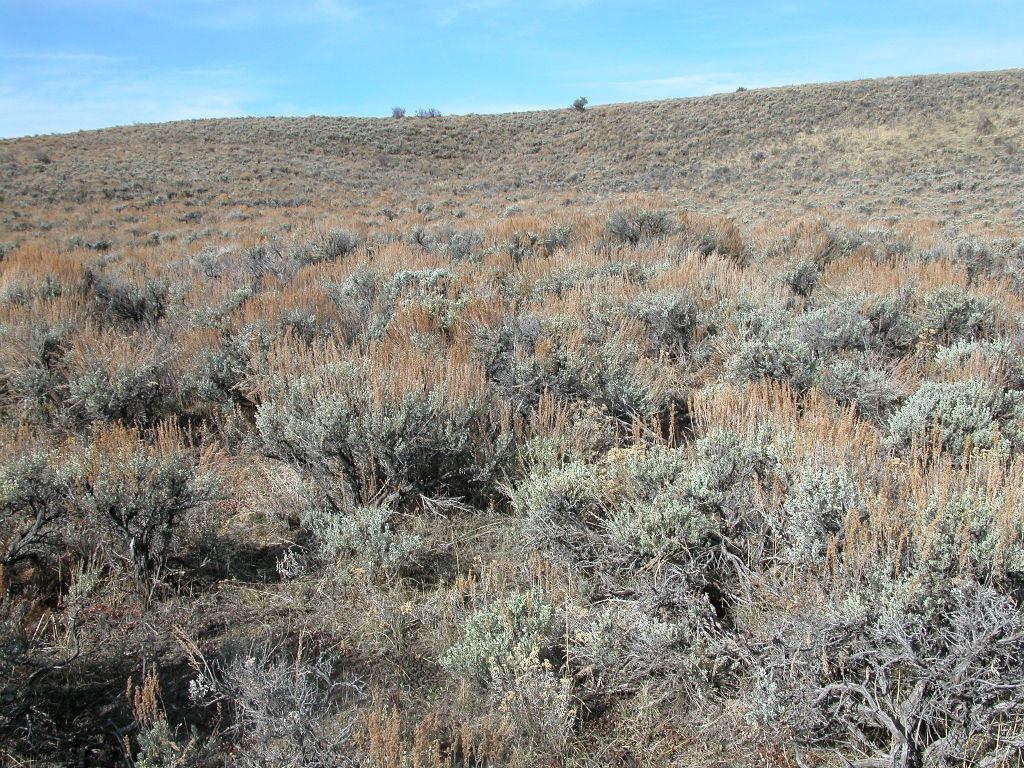
The day before the planned burn in early April, we set up a series of photo points to capture pre-burn conditions and, hopefully, post-burn conditions. This is one of several photo points for this planned burn, showing a mature sagebrush ecosystem.

Burn day! Not taken from the exact photo-point, of course.
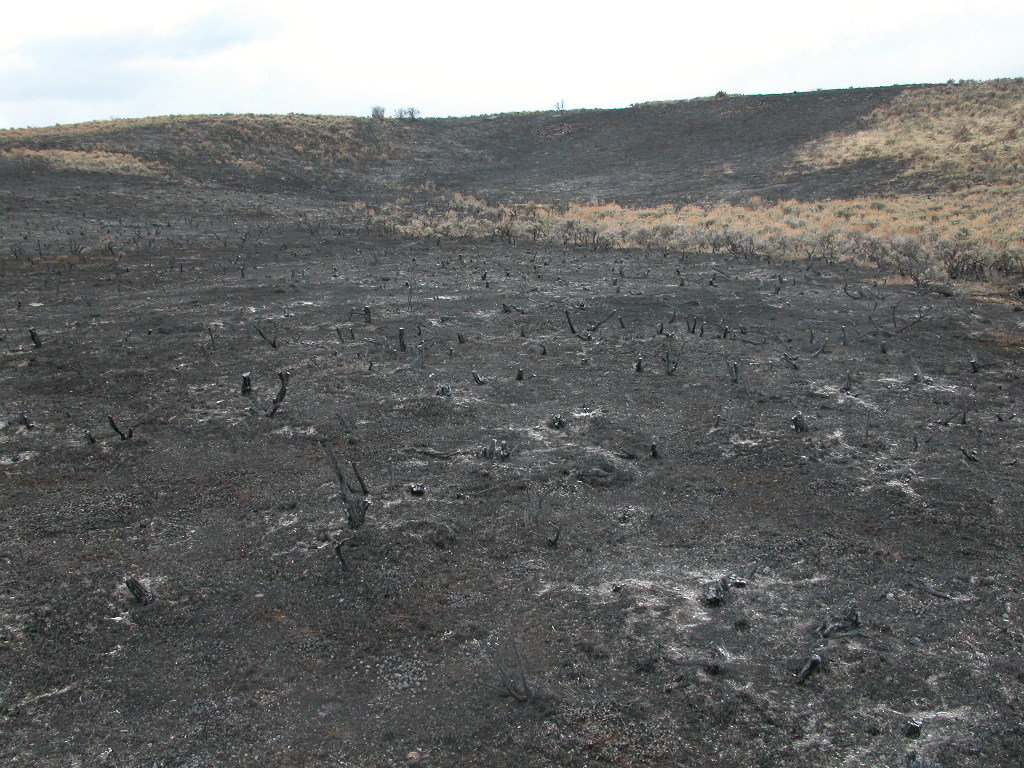
This photo, taken three days after the previous photo, shows how the fire burned in a nice, mosaic pattern which maximizes edge habitat at the boundary of burned and unburned areas.
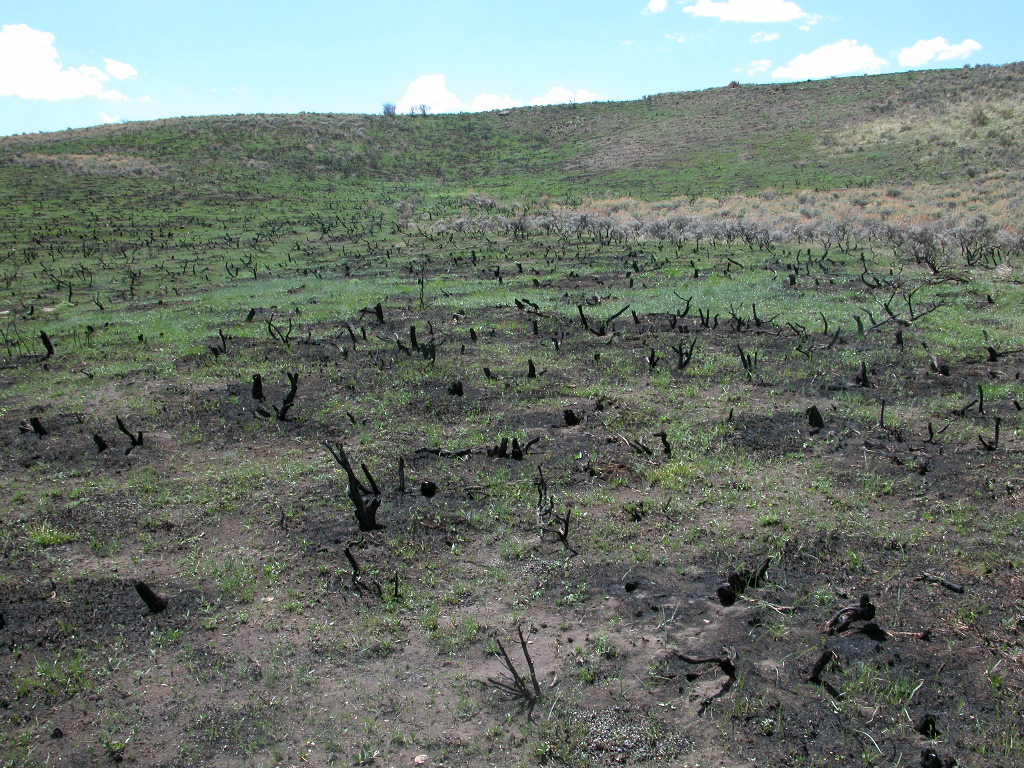
One month after the burn, in early May, vegetation is coming up through the ash after some spring rains.

By June, the vegetation has thickened and the rabbitbrush has re-sprouted as well. June is typically a very dry month, so the new green growth will likely begin to attract grazing animals.
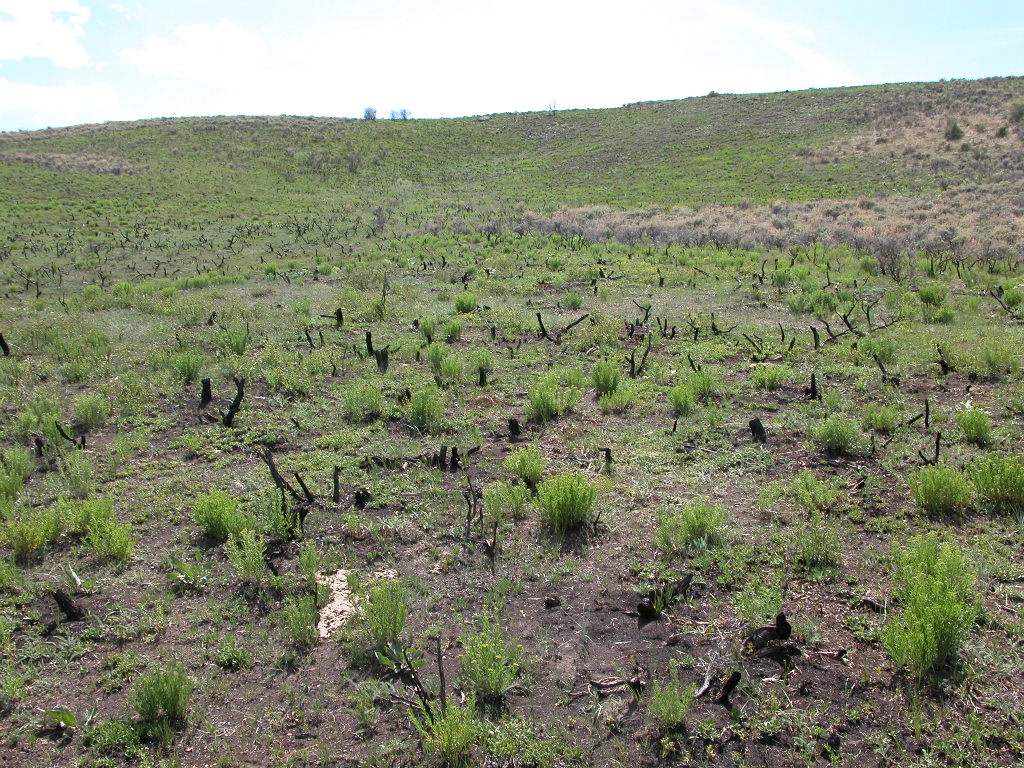
One month later, the regrowth continues but there is already evidence of grazing as both wild and domestic grazers have discovered the burn area. This is how repeat photography, used by the ranch to document lots of habitat projects, is so helpful to managers in capturing both the benefits and the problems with projects.
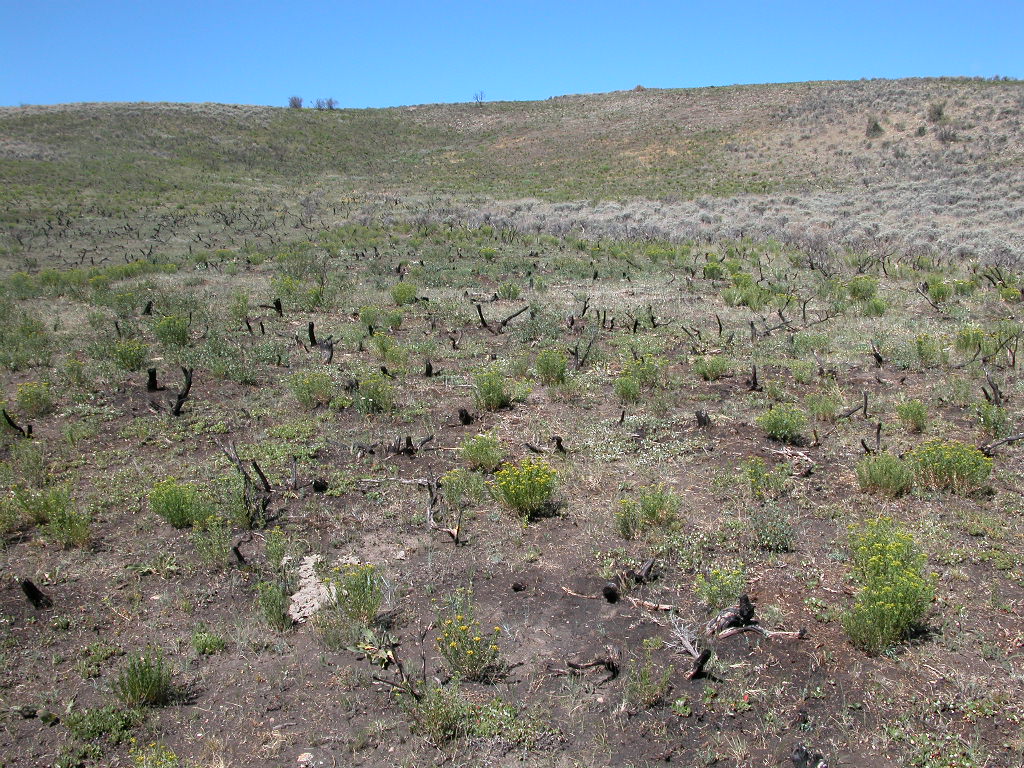
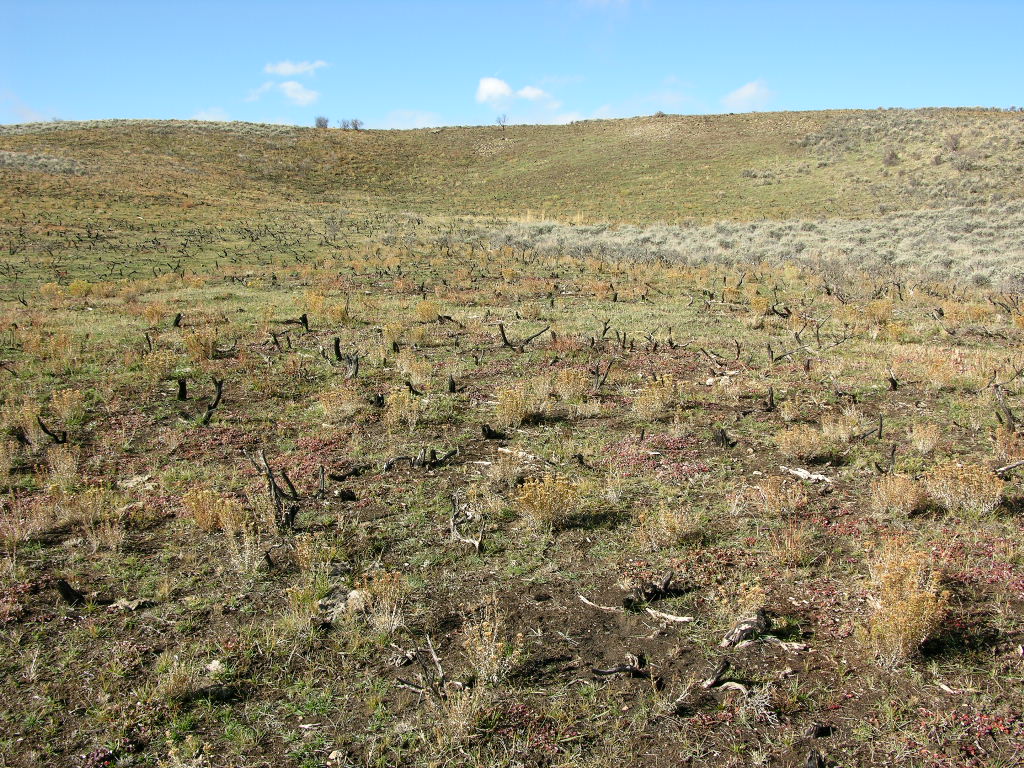
These photos, from August and October, show continued heavy grazing use. Although the vegetation continues to close over gaps of bare earth, the rabbitbrush is shunned by grazers and will be one of the few plants to flower and go to seed. No cattle graze in this pasture, and while bison have visited the burn area, most of the grazing use is from mule deer and pronghorn.
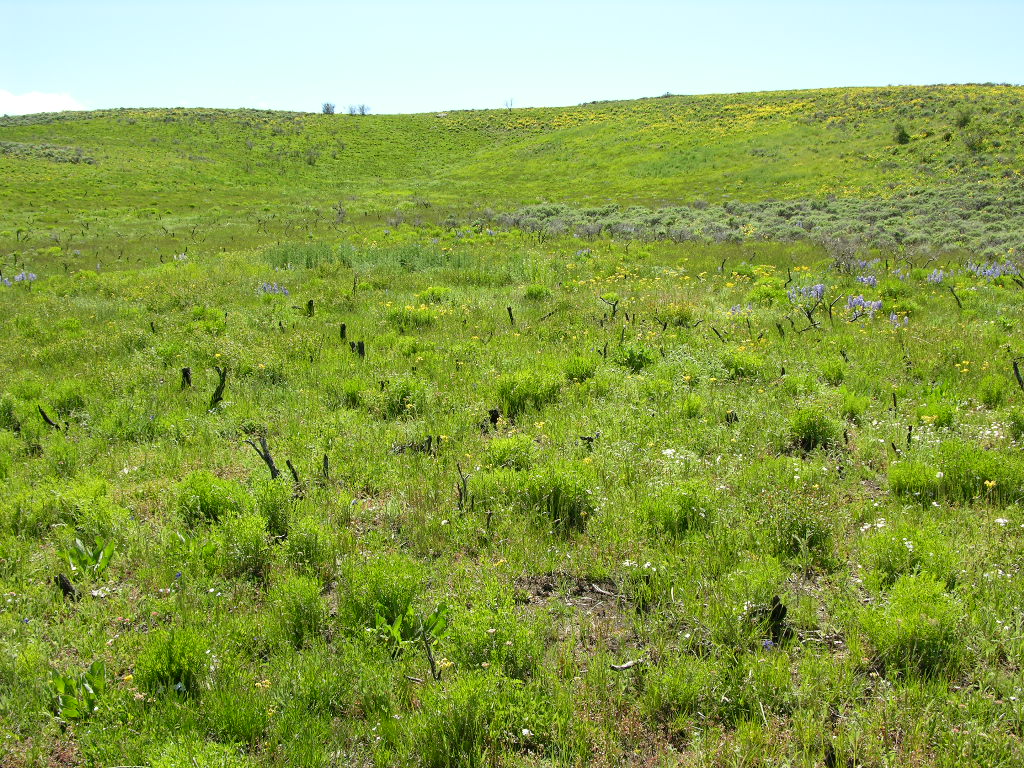
One year later this photo, taken in June, shows lush vegetative regrowth, high species diversity, and very little bare ground. While continued grazing use and an increase in rabbitbrush abundance is expected in the coming season, the fire has certainly accomplished its goals for increasing species and vegetation community diversity, habitat improvement, and sagebrush renewal. The only concern is a small patch of Canada thistle visible just beyond the center of the photo, a noxious weed that will be sprayed this season. Future photos and vegetation monitoring will continue to document how the ecosystem recovers from fire, and how the wildlife and bison continue to benefit.
Tags: Habitat, landscapes, livestock, monitoring, plants, ranching, wildlife